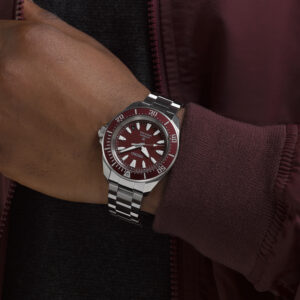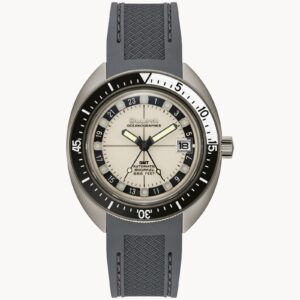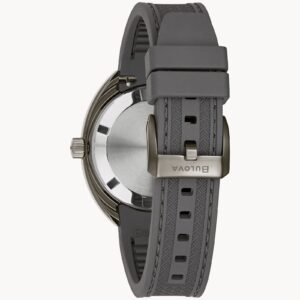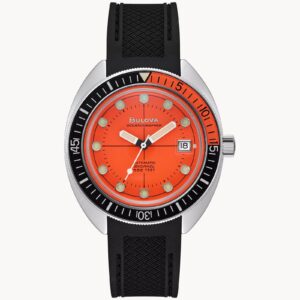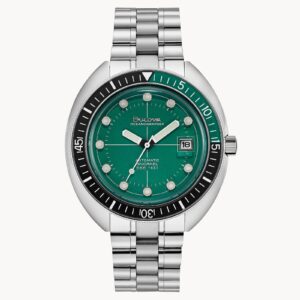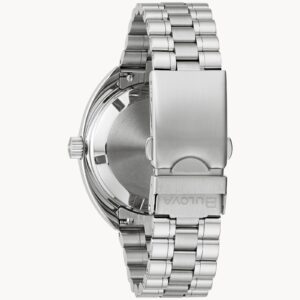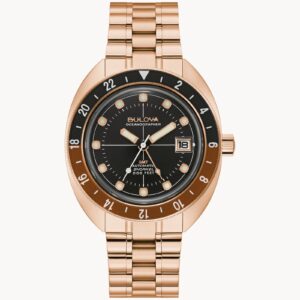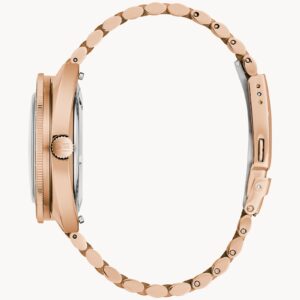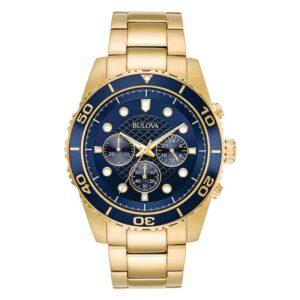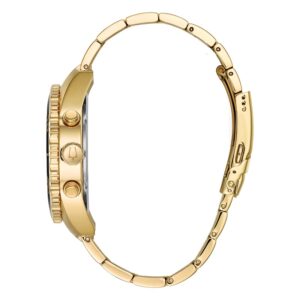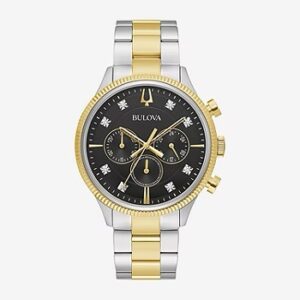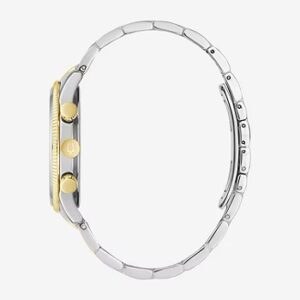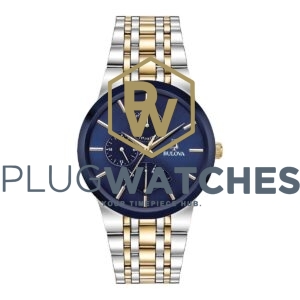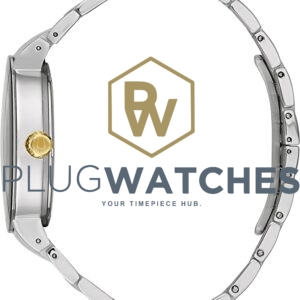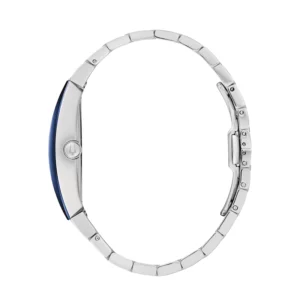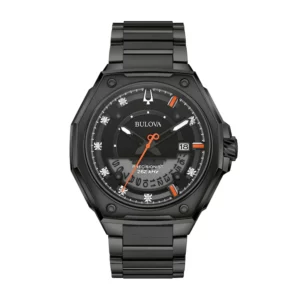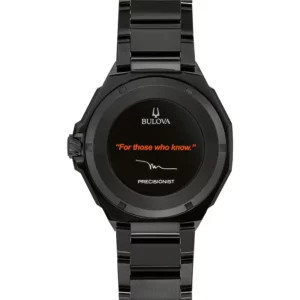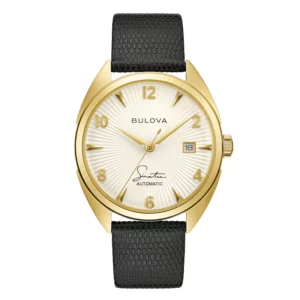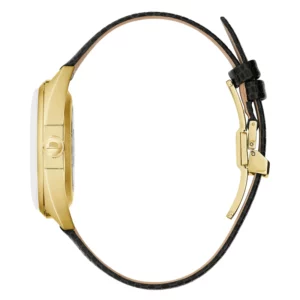Bulova was founded and incorporated as the J. Bulova Company in 1875 by Bohemian immigrant Joseph Bulova. It was reincorporated under the name Bulova Watch Company in 1923, became part of the Loews Corporation in 1979, and was sold to Citizen at the end of 2007. Throughout its history, Bulova developed a reputation for technological innovation and for adapting to the changing needs of customers and the evolving trends of the market.
Bulova started a small jewelry shop in New York City around 1875. It was located in New York’s Maiden Lane specializing in jewelry and the repair of clocks and the occasional pocket watch. Around 1911 Bulova began producing table clocks and pocket watches.
In 1912, Joseph Bulova launched his first plant dedicated entirely to the production of watches.[8] Manufacturing watches at their factory in Biel, Switzerland, he began a standardized mass production new to watchmaking. In 1919, Bulova offered the first complete range of watches for women and men in 1924. The visual style of his first popular advertising made its watches popular with the American public. But beyond the original style, precision and technological research also became imperative for Bulova. In 1927, he set up an observatory on the roof of a skyscraper located at 580 5th Avenue to determine universal time precisely.
Bulova established its operations in Woodside, New York, and Flushing, New York, where it made innovations in watchmaking, and developed a number of watchmaking tools. Its horological innovations included the Accutron watch, which used a resonating tuning fork as a means of regulating the time-keeping function.
During the 1920’s and ’30’s, Bulova was noted for its art deco watches, which were typically either rectangular or square. Models from this period included the Breton (square or rectangular cases), the Banker (tonneau or barrel shaped), and the Commodore (round cases). All three of these models were modernized in 2020 as the Joseph Bulova Collection, utilizing swiss made Sellita mechanical movements. From 1922 through 1930, Bulova marketed 350 different ladies’ Art Deco watches, with at least an equal number of models for men.
The Westfield Watch Company, Inc. is listed as a Bulova subsidiary at least as early as 1931, but Bulova had trademarked the Westfield name in 1927. Westfields were considered the lower cost options in the Bulova line, since the movements typically had lower jewel counts than mainstream Bulovas, and cases and straps may also not have been of the same quality as other Bulova models. Like the regular Bulovas, the Westfield movements were Swiss made, but the two lines did not use the same movements. Westfield watches were produced at least through the 1950s, with the Caravelle line introduced in the early 1960s. The Bulova trademark of the Westfield name is reported as cancelled in 1989.
-
BULOVA OCEANOGRAPHER GMT 98B407
For the uncompromising thrill seeker, there is no alternative to this all-new Bulova men’s Oceanographer GMT.
Estimated delivery on 26 April - 2 May, 2025$2,200.00 EAN: 147000132444BULOVA OCEANOGRAPHER GMT 98B407
$2,200.00 -
BULOVA DEVIL DIVER OCEANOGRAPHER 96B350
Bulova’s eye-catching Oceanographer men’s timepiece is a perfect blend of function and sport style. It features a stainless steel case and bright orange dial with a black supple rubber strap and fine Miyota automatic movement.
Estimated delivery on 26 April - 2 May, 2025$1,200.00 EAN: 083000132353BULOVA DEVIL DIVER OCEANOGRAPHER 96B350
$1,200.00 -
BULOVA DEVIL DIVER OCEANOGRAPHER 96B322
A design tribute to Bulova’s acclaimed ‘70’s Oceanographer “Devil Diver” watch powered by a self-winding mechanical movement with a 42-hour power reserve.
Estimated delivery on 26 April - 2 May, 2025$1,200.00 EAN: 134000132239BULOVA DEVIL DIVER OCEANOGRAPHER 96B322
$1,200.00 -
BULOVA OCEANOGRAPHER GMT 96B405
With the men’s Bulova Oceanographer GMT, Bulova brings exceptional functionality to one of its iconic designs. The stainless-steel case features a curved silhouette, a box sapphire crystal, a blue-and-red bidirectional rotating 24-hour bezel, and a screw-down crown providing 200m of water resistance.
Estimated delivery on 26 April - 2 May, 2025$2,250.00 EAN: 009000132155BULOVA OCEANOGRAPHER GMT 96B405
$2,250.00 -
BULOVA OCEANOGRAPHER GMT 97B215
This men’s Bulova Oceanographer GMT brings a new look and new functionality to the legendary Bulova design.
Estimated delivery on 26 April - 2 May, 2025$2,250.00 EAN: 194000132080BULOVA OCEANOGRAPHER GMT 97B215
$2,250.00 -
BULOVA SURVEYOR 98B422 Automatic Watch
The Bulova men’s Surveyor is defined by exceptional quality and sophisticated aesthetics. The silver-tone stainless steel case features sculpted edges and faceting which provide an effortless wear on the wrist, with polished and brushed finishing, a flat sapphire crystal, and a matching quick-release 3-link stainless steel bracelet with a push-button deployant clasp.
The rich burgundy dial has a sunburst finish and features rose gold-tone accents, hands with luminescent fill, debossed minute markers, and a magnified date display. The watch is powered by an 21-jewels and a 42-hour power reserve, which can be seen in full through a mineral crystal exhibition window in the caseback. For those with a discerning eye for refined luxury, this Bulova men’s timepiece is the obvious choice.The rich burgundy dial has a sunburst finish and features rose gold-tone accents, hands with luminescent fill, debossed minute markers, and a magnified date display. The watch is powered by an 21-jewels and a 42-hour power reserve, which can be seen in full through a mineral crystal exhibition window in the caseback. For those with a discerning eye for refined luxury, this Bulova men’s timepiece is the obvious choice.
Estimated delivery on 26 April - 2 May, 2025$850.00 EAN: 190000129211 -
BULOVA MARINE STAR 98A172 GOLD TONE TIMEPIECE
Crafted in yellow plated stainless steel, this luxe and sophisticated Bulova chronograph is perfectly versatile to suit every occasion. A navy dial offers baton markers and a trio of subdials for precise timekeeping.
Estimated delivery on 26 April - 2 May, 2025$550.00 EAN: 168000087831 -
BULOVA 98D172 DIAMOND CHRONOGRAPH
Bulova’s Dress Sport men’s watch features a statement two-tone stainless steel case and bracelet which is finished with a deployant buckle. The dial is set with eight diamonds, and features a six-hand chronograph, combining form and function for a look of luxury at a great value.
Estimated delivery on 26 April - 2 May, 2025$510.00 EAN: 145000087672 -
BULOVA 98C132 MEN’S WATCH
From the Modern Collection. Multi-function design In stainless steel with silver-tone and gold-tone finish, blue dial, curved mineral glass, and deployment closure.
Estimated delivery on 26 April - 2 May, 2025$650.00 EAN: 127000069551BULOVA 98C132 MEN’S WATCH
$650.00 -
BULOVA GEMINI 96A258
Distinctive asymmetrical tonneau shaped stainless steel case with a blue signature Futuro edge to edge curved metalized crystal features a blue dial and a stainless steel bracelet. The watch features a three-hand quartz movement, deployant buckle with pushers, and water resistance to 30 meters.
Estimated delivery on 26 April - 2 May, 2025$600.00 EAN: 155000062784BULOVA GEMINI 96A258
$600.00 -
Estimated delivery on 26 April - 2 May, 2025$1,800.00 EAN: 024000061892
-
BULOVA FRANK SINATRA ‘FLY ME TO THE MOON’ 97B196
Featuring a silver-tone sunray-textured dial, 39mm gold-tone stainless steel case, and the song title displayed on the inside of the textured black leather strap, this handsome timepiece will add a stylish statement to any ensemble
Estimated delivery on 26 April - 2 May, 2025$1,200.00 EAN: 070000061844




